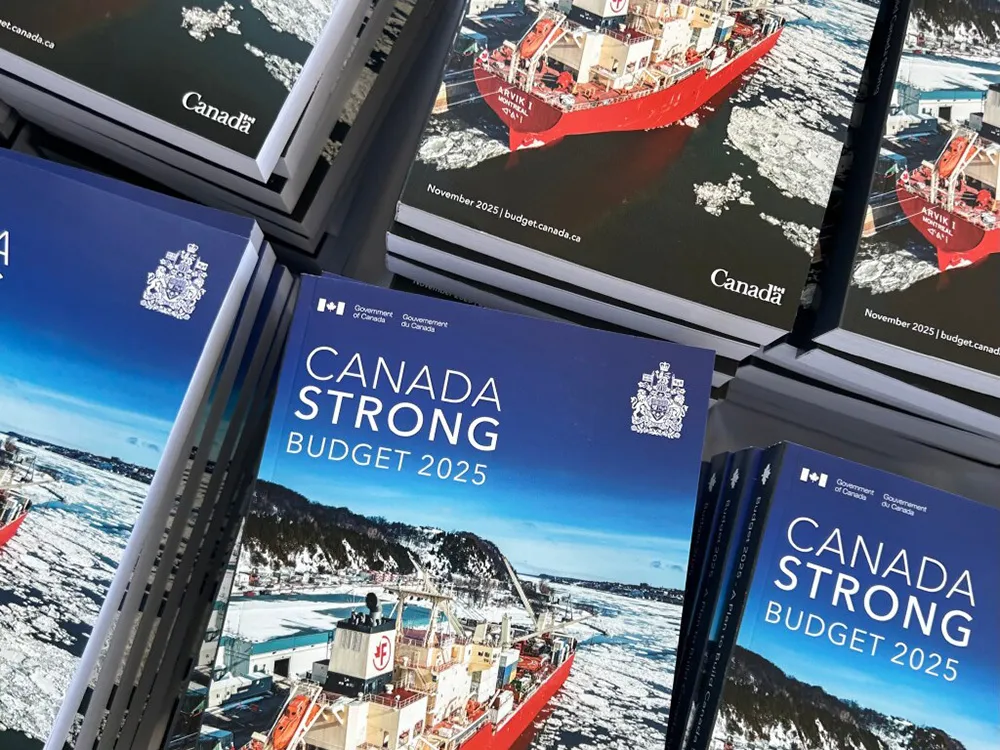The newly announced Canada Strong federal budget (Budget 2025) holds meaningful implications for trade businesses across Ontario. Electrical, plumbing, HVAC, excavation, concrete, formwork, and other sub-contracting trades are all expected to see increased opportunity as infrastructure investment accelerates in 2026. For those aiming to strengthen their infrastructure readiness for Ontario sub-contractors, now is the time to turn these budget implications into action. In this expert blog, Partner and VP Construction Mike Di Pinto explains how positioning for demand, aligning risk management, and improving operational readiness will prepare your business for the surge in 2026 infrastructure contracts.
Infrastructure investment is rising — more work but also higher expectations
With the new budget, the Liberal federal government has signaled a major push into infrastructure. According to the budget notice from Department of Finance Canada, the new plan “builds the major infrastructure, homes, and industries that grow our economy”. More specifically:

- The budget introduces a new fund called the Build Communities Strong Fund that commits $51 billion over ten years (starting 2026-27) toward local infrastructure (roads, bridges, water/waste-water, transit, municipal assets).
- The budget also commits to increasing the capital envelope of the Canada Infrastructure Bank (CIB) from $35 billion to $45 billion, and enabling it to participate in more nation-building projects across sectors.
- From a municipal standpoint in Ontario, the Ontario Big City Mayors have noted that municipalities own a large majority of local infrastructure and welcomed the commitment, thus indicating there will be work flowing into local trades.
Infrastructure readiness for Ontario sub-contractors likesly means:
- More tender opportunities may begin to surface at municipal and provincial level as federal funding flows through local governments and agencies.
- Projects may increase in scale or complexity: if the prime contractors mobilize for heavier civil or multi-year builds, your trade business may even be asked to perform on larger, more demanding scopes.
- Procurement will likely evolve, too. With more money at stake, the contract terms may become stricter, documentation requirements higher, and there will likely be more oversight of subcontractors’ insurance, safety and risk control.

Why surety and insurance matter for infrastructure readiness for Ontario sub-contractors
Greater project volumes and sizes are very good news. However, as Mike says, “only if your business is set up to manage the risk and satisfy the contract requirements.” As a sub-contractor in Ontario your role is changing slightly when you work on infrastructure-funded builds, so pay attention to these elements.
Risk and contract infrastructure readiness for Ontario sub-contractors
When you are hired by a prime contractor for an infrastructure build consider that:
- The project owner may require you to provide specific evidence of insurance, safety record, references, and sometimes prequalification.
- Contractors may face tighter terms around change orders, scope creep, schedule delays, and hidden escalation (labour costs, materials, equipment mobilization).
Insurance and bonding considerations
For sub-contractors operating in Ontario this means:
- Confirm your general liability, wrap-up liability (if applicable) and equipment insurance limits align with what the prime will expect. If you move into larger builds you may need higher limits.
- Validate that you are protected for the kinds of exposures that infrastructure presents: excavations, heavy equipment, working near water or transit corridors, long-term maintenance work.
- If you’re working on a project where the prime is bonded (bid bond, performance bond) you may be asked to support pass-through or guarantee obligations — work with your broker at Ferrari & Associates to ensure your brokerage knows you are “in the infra game”.
- For 2026 readiness plan to review your insurance renewal ahead of time, ensure your financials support higher scope work and look at whether you will need to expand your bonding facility or limit. Even if a sub-contractor your firm’s capacity and readiness may become a selection factor for project owners.
Infrastructure readiness for Ontario sub-contractors pointers
Here are some practical items to consider from Mike Di Pinto:
- Start monitoring municipal and provincial procurement calendars in your region: city, county, regional municipality, transit agency. The federal budget’s infrastructure money will flow through those channels.
- Develop or refine your “capability statement” or trade-specific profile tailored to infrastructure work: show your experience, safety record, equipment list, and bonding/insurance credentials. This makes you more credible when primes evaluate subcontractors.
- If your business is trade-specific, like plumbing, HVAC, or concrete, for example, understand how you might fit into larger packages. “For instance where an infrastructure build includes service corridors, utility works, pump stations, or transit facility fit-out.”
- Ensure your supply chain and labour plan are strong. We’ve seen how infrastructure builds attract competition for trades and materials, so plan for labour availability, apprentices, and retention now rather than after bids go live.

Getting ready for 2026 and infrastructure work
The timing for this infrastructure rollout makes infrastructure readiness for Ontario sub-contractors essential heading into 2026 and beyond. Here’s what Director of Surety, Kari Davis and Mike Di Pinto suggest:
- Mike says “review your growth plan: determine whether you will scale up in 2026, increase your equipment inventory, hire more trades, or perhaps invest in training or certifications relevant to infrastructure (heavy civil, transit, water/waste-water).”
- Karis says “audit your insurance and bonding position now: meet with our team, review your current status, ask “if we bid a $10 m scope next year are we covered?” If not, increase your facility or adjust your limits!”
- Strengthen your relationships with prime contractors: engage with firms you might partner with on larger infrastructure builds, ask about their sub-contractor prequalification process, get on their list now rather than wait.
- Price your jobs with escalation in mind: material, labour and equipment costs may continue to rise as infrastructure works expand. Factor this, and any potential trade uncertainty into your bids so you don’t erode your margin.
- Keep your safety and quality record clean: infrastructure owners and primes will look for sub-contractors with solid safety performance, certification (COR, IHSA, etc.), and quality delivery. Past mistakes or weak records may exclude you from selection.
Why ignoring infrastructure readiness for Ontario sub-contractors would be risky
If your trade firm remains focused only on “business as usual” smaller commercial or residential work while the infrastructure wave advances, you risk missing out on major opportunities. Infrastructure readiness for Ontario sub-contractors means not being under-equipped when large contracts hit. Without strong insurance, bonding readiness, trade availability and prime-contractor relationships you may find yourself squeezed out. You might bid too late, lose margin due to cost escalation, or fail to meet the stricter requirements of infrastructure builds. For sub-contractors in Ontario this is not simply a growth chance but rather a shift in how you position your business for success.
Mike’s Advice for infrastructure readiness for Ontario sub-contractors
The federal budget gives a clear signal: infrastructure investment is making a strong comeback, especially locally in Ontario municipalities and through new funds like the Build Communities Strong Fund. As a sub-contractor you can benefit, but only if you prepare. That means aligning your insurance and bonding capacity, building your labour and equipment readiness, collaborating with prime contractors, and securing your place in the tender-pipeline for 2026. There’s still time to elevate your business from one-job-at-a-time to being “ready for infrastructure”.
This is the time to prioritize infrastructure readiness for Ontario sub-contractors, ensuring your insurance, bonding, and workforce strategies align with the 2026 infrastructure investment cycle.
Check out our blog to learn more, and when you have questions, or are ready to move forward into 2026, talk to our team. You’ll be glad you did!

